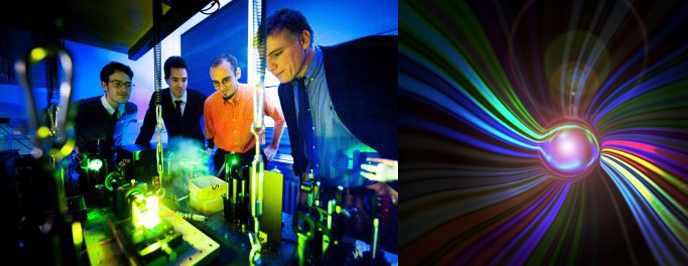Physicists Conjure the First Super-Photon, Creating a Whole New Kind of Light Source
Physicists from the University of Bonn are looking at things in a whole new light, quite literally. Through the clever...

Physicists from the University of Bonn are looking at things in a whole new light, quite literally. Through the clever use of mirrors and some smart science, researchers there have created a wholly new source of light by cooling photons to the point that they condense into a “super photon.” The so-called Bose-Einstein condensate made up of photons was, until now, thought impossible.
“Super particles” have been created before, but never out of light. For instance, take rubidium atoms down to a low enough temperature in a compact space, and they quickly become indistinguishable, behaving like a single particle (known as a Bose-Einstein condensate). And in theory, this should also work with photons. But it does not, for if you start to cool photons down they disappear. Perhaps expectedly, light doesn’t chill very well.
Think about a light bulb; if you apply a current, the filament gets hot and begins to give off light of different colors – red then yellow then blue. Scientists measure this kind of light-heat against a theoretical model known as a black body, as in it’s dark until you heat it to a certain temperature where it begins to give off light at different wavelengths depending on temperature (click through the source link below for more on this).
When a black body cools down, at some point it no longer radiates light in the visible spectrum, giving off infrared photons instead. Therein lies the problem with photons – as temperature and radiation intensity decrease, so does the number of photons. Keeping them together in quantity while cooling them has presented a fundamental problem for creating the Bose-Einstein condensate composed of photons.
The key to keeping the photons form dissipating: keep them moving. The U. of Bonn team used mirrors to bounce the photons back and forth between two mirrors. Every so often the photons collided with dissolved pigment molecules that were placed between the reflective surfaces, molecules that essentially absorbed the photons and spit them out with each collision. But with each collision, the photons slowly assumed the temperature of the pigment molecules, cooling one another to room temperature without being lost in the process.
Physics aside, the discovery is cool for a variety of reasons. Most notably, it’s an entirely new kind of light with vast industrial implications, especially in the chip-making sector. Currently, laser’s don’t operate in the really short wavelengths like UV and X-ray. With a photonic Bose-Einstein condensate, the researchers say this should be possible.
The inability to etch chips with lasers in the shorter wavelengths has limited how precisely they can design circuits on silicon. Finer etching begets higher-performing microchips, and that’s just a start. When you create a whole new kind of light, everything from medical imaging and laboratory spectroscopy to photovoltaics could stand to benefit.